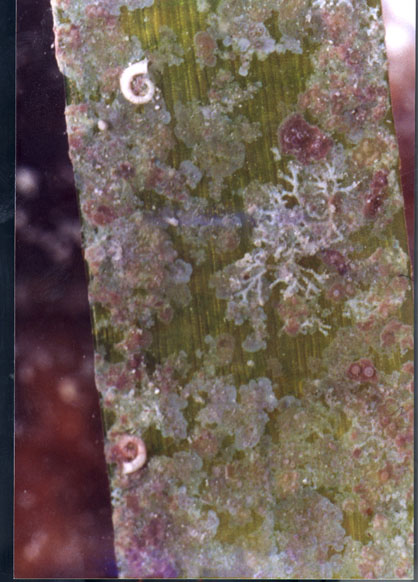
A variety of types of coralline algae growing on a turtle grass leaf
Collected near Big Pine Key, Florida, January 2000.

Photo of Turtlegrass shoot with a man's finger to indicate scale |
The two spiral-shaped objects on the leaves are the calcareous tubes of filter-feeding polychete worms (probably in the genus Spirorbis). These worms have feathery feeding appendages (retracted and not visible in this photo) similar to the feeeding appendages of feather duster worms.
All of the other growths that you see on this otherwise smooth green leaf are various sorts of encrusting coralline algae (Phylum Rhodophyta).
The coralline algae that grow on turtle grass leaves tend to be relatively short-lived, reaching reproductive maturity at small sizes, and with individual growths seldom covering large areas (hence the patchy appearance on the leaf). In contrast, coralline algae that grow on rocks are often long-lived, covering large areas in time, making the rock look like it has been dipped in pink or purple paint.
Though coralline algae typically turn white when they die (because all that remains is the calcium carbonate they accumulated as they grew), the branching white filament-like growths on the leaf in the photo are in fact living growths of a species that looks white even when alive.